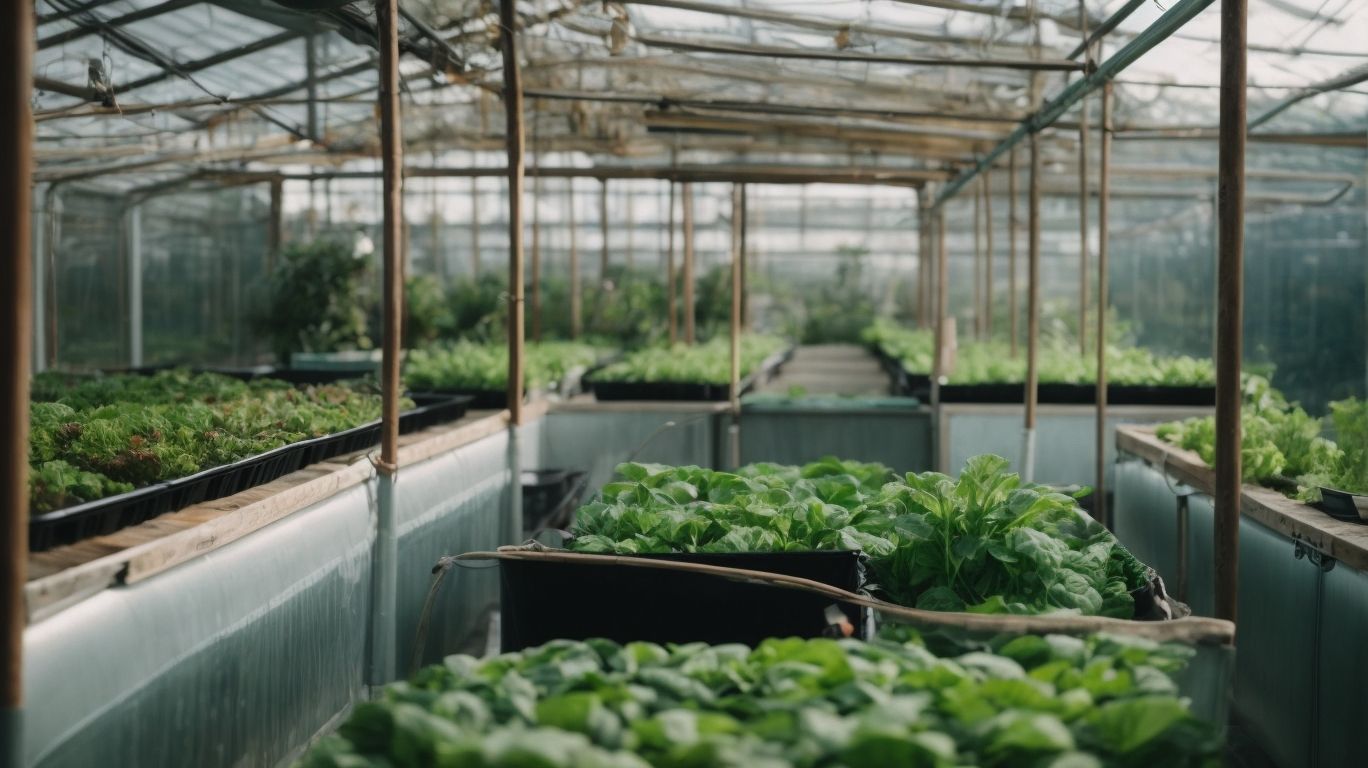In the world of gardening, there are various techniques and methods that have been practiced for centuries, each with its own unique benefits and cultural significance. One such traditional method is 3 Sisters Gardening, a sustainable and holistic approach that integrates the cultivation of three essential crops – corn, beans, and squash. This ancient technique, practiced by indigenous peoples such as the Native Americans, harnesses the complementary qualities of these three plants to create a thriving and self-sustaining agricultural ecosystem.
In this article, we will delve into the principles and practices of 3 Sisters Gardening, examining the symbiotic relationship between the three sisters, the ecological benefits it offers, and the steps to start your own 3 Sisters garden. Whether you’re a seasoned gardener or a novice enthusiast, embracing this age-old tradition can enrich your gardening experience and yield a bountiful harvest.
Key Takeaways:
What is 3 Sisters Gardening?

Credits: Monkinthegarden.Com – Alexander Brown
3 Sisters Gardening is a traditional Native American agricultural technique that involves the interplanting of corn, beans, and squash in the same garden bed.
This centuries-old method is deeply rooted in indigenous traditions and is renowned for its environmental and agricultural benefits. The practice not only symbolizes the harmonious relationship between the three crops but also demonstrates the wisdom of crop residue management and soil fertility in traditional planting seasons.
The corn provides a structure for the bean vines to climb, while the beans fix nitrogen into the soil, benefiting both the corn and squash. The large squash leaves create a natural mulch, reducing weeds while retaining moisture. The interplanting dynamics of the three crops contribute to a balanced and sustainable ecosystem, making this method a prime example of agroecological innovation.
What Are the Three Sisters?
The Three Sisters, consisting of corn, beans, and squash, are central to Native American agricultural traditions, offering a diverse array of nutritional value and significance.
Corn
Corn is a staple crop in 3 Sisters Gardening, requiring well-drained soil, full sun exposure, and a historical significance in Native American agricultural practices.
In a 3 Sisters Garden, cultivating corn involves meticulous attention to the soil’s fertility. Before planting, it’s crucial to conduct a soil test to determine the pH levels, nutrient content, and organic matter. This ensures that the soil provides the necessary conditions for corn cultivation.
Corn plants thrive in a sunny environment, requiring a minimum of 6-8 hours of sunlight daily. This is consistent with the traditional practices of Native American corn cultivation, which relied on the benefits of sunlight for optimal growth. Understanding the historical context of corn cultivation adds depth to the traditional planting techniques utilized in a 3 Sisters Garden.
Beans
Beans, particularly pole beans, play a vital role in 3 Sisters Gardening, enriching the soil with nitrogen through their roots and requiring specific soil temperature for optimal growth.
Pole beans, being a type of legume, have a unique ability to fix nitrogen in the soil through a symbiotic relationship with rhizobia bacteria residing in their root nodules. This means that they can convert atmospheric nitrogen into a form usable by plants, thus enhancing the fertility of the soil for the other crops in the Three Sisters system.
When interplanted with corn and squash, pole beans form a harmonious alliance, as they utilize the vertical space provided by the cornstalks, while also preventing pests and weeds from proliferating. The process of interplanting creates a microclimate that helps maintain optimal soil temperature and moisture levels, contributing to the health and productivity of the entire garden.
Squash
Squash, including the use of squash seeds and compost, holds cultural significance in 3 Sisters Gardening, intertwined with traditional stories and the heritage of the Haudenosaunee people.
In the Three Sisters system, squash plays a vital role in maintaining the balance and health of the garden. The large leaves of the squash plants help to shade the soil, reducing weed growth and retaining moisture. The vining nature of squash plants provides a natural ground cover, acting as a living mulch. Squash seeds, such as those of the Haudenosaunee, are carefully chosen and sown in the mounds alongside corn and beans, ensuring their integration into the symbiotic relationship of the Three Sisters.
How Does 3 Sisters Gardening Work?
3 Sisters Gardening operates on the principles of companion planting, nutrient cycling, and natural pest control through the symbiotic relationship between corn, beans, and squash.
The dynamics of 3 Sisters Gardening involve a carefully orchestrated synergy between the three main crops. The corn provides a natural trellis for the beans to climb, enabling them to access more sunlight and space. In return, the beans fix nitrogen in the soil, which benefits the nutrient requirements of the corn and squash. Meanwhile, the sprawling squash vines act as a living mulch, suppressing weeds and retaining soil moisture, creating a favorable microclimate for all three plants.
This intercropping strategy not only maximizes space utilization but also promotes ecological interactions that benefit each crop. The cyclical exchange of nutrients among the three plants ensures that the soil’s fertility is continually replenished, reducing the need for external inputs like fertilizers. The dense planting pattern and diverse plant structures disrupt pest habitats and minimize pest damage naturally, contributing to pest management in a way that is inherently sustainable.
What Are the Benefits of 3 Sisters Gardening?

Credits: Monkinthegarden.Com – Willie Rodriguez
3 Sisters Gardening offers a multitude of benefits, including companion planting advantages, nutrient cycling dynamics, natural pest control, space-saving attributes, and cultural significance within Native American communities.
Companion Planting
Companion planting in 3 Sisters Gardening involves a symbiotic relationship between the Three Sisters, considering their respective lifecycles and interactions with natural elements such as Dogwood leaves and Canada geese.
The Three Sisters, consisting of corn, beans, and squash, are interplanted based on their complementary characteristics. The corn provides support for the beans to climb, while the beans fix nitrogen in the soil, benefiting the corn and squash. In turn, the broad leaves of the squash provide shade for the soil, reducing weed growth and retaining moisture for the other two sisters.
When integrating natural elements like Dogwood leaves, they can be used as mulch around the Three Sisters, enriching the soil as they decompose. The presence of Canada geese can contribute to soil aeration while foraging, enhancing the overall health of the ecosystem within the garden.
Nutrient Cycling
Nutrient cycling in 3 Sisters Gardening involves the efficient utilization of organic matter to enhance soil fertility, reflecting traditional agricultural techniques and sustainable soil management.
This method of farming, which has been traditionally practiced by indigenous communities, incorporates the intentional planting of corn, beans, and squash together in a mutually beneficial manner. As the corn provides a structure for the beans to climb, the beans fix nitrogen into the soil, benefiting the corn and squash. In turn, the squash acts as a living mulch, suppressing weeds and retaining soil moisture. This symbiotic relationship among the crops maximizes the use of available nutrients and creates a sustainable, self-regenerating system.
Pest Control
Pest control in 3 Sisters Gardening harnesses natural mechanisms and modern garden practices to mitigate potential threats, aligning with the principles advocated by organizations such as the Minnesota Agriculture Classroom.
The concept of 3 Sisters Gardening emphasizes the use of companion planting, which involves growing corn, beans, and squash together to enhance plant health and deter pests. This technique is rooted in traditional Native American agricultural practices and highlights the synergistic relationships between these plants, creating a balanced ecosystem that naturally suppresses pest populations.
Space Saving
3 Sisters Gardening optimizes space utilization in the garden site, aligning with educational resources such as the New Hampshire Farm School that promote efficient land usage.
This traditional Native American method involves planting corn, beans, and squash in the same area to maximize the use of space and nutrients in a garden. Corn provides a natural trellis for beans to climb, while beans fix nitrogen in the soil, benefiting the corn and squash. The large squash leaves then act as a living mulch, suppressing weeds and retaining moisture, reducing the need for additional space-consuming practices like excessive tilling.
The New Hampshire Farm School emphasizes the sustainable aspects of this method, imparting knowledge about soil health, intercropping, and diverse ecologies for efficient land usage.
Cultural Significance
The cultural significance of 3 Sisters Gardening is deeply rooted in traditional stories and the heritage of Native American communities, including the traditions of the Cherokee and Haudenosaunee peoples.
These communities have passed down stories through generations, detailing the interconnected relationships between corn, beans, and squash. 3 Sisters Gardening represents not only a sustainable agricultural practice, but also a reflection of the indigenous wisdom and understanding of the land. The Cherokee and Haudenosaunee peoples hold 3 Sisters Gardening as a symbol of unity and cooperation, as each plant supports and complements the others in a harmonious manner.
This traditional agricultural method embodies the cultural identity of these communities and serves as a testament to their ongoing stewardship of the land. The reverence for nature and the understanding of the balance within ecosystems are reflected in the 3 Sisters Gardening technique, showcasing the deep respect for the environment within indigenous cultures.
How to Start a 3 Sisters Garden?
Starting a 3 Sisters Garden involves careful planning and preparation of the garden site, drawing insights from educational resources provided by institutions like Cornell University and tailored to the unique gardening traditions of North America.
Understanding the historical and cultural context of the 3 Sisters Garden is essential to appreciate its significance in North American Indigenous agriculture. This traditional intercropping method, consisting of corn, beans, and squash planted together, not only holds agricultural importance but also carries deep cultural and spiritual meanings. By integrating these historical insights, gardeners can honor and respect the legacy of Indigenous agricultural practices while also benefiting from the ecological and nutritional advantages of this planting technique.
Choosing the Right Location
Selecting the right location for a 3 Sisters Garden involves evaluating soil fertility, conducting a soil test, and incorporating compost for optimal plant growth and vitality.
When determining the right location for a 3 Sisters Garden, it is essential to assess the soil fertility to ensure that it can adequately support the crops. This can be done by considering factors such as the soil texture, pH level, and nutrient content.
Conducting a soil test further aids in identifying specific deficiencies or imbalances that may hinder plant growth. Once the soil analysis is completed, compost can be added to enrich the soil, providing essential nutrients for healthy plant development and creating a sustainable and organic environment for the 3 Sisters Garden.
Preparing the Soil
Preparing the soil for a 3 Sisters Garden involves optimizing soil fertility, timing the planting season, and considering leaf size dynamics, in line with guidance from authoritative sources like Sierra Club Books.
First and foremost, soil fertility optimization is crucial for a successful 3 Sisters Garden. It’s essential to conduct soil tests to assess its composition and nutrient levels. Based on the results, amendments such as organic matter, compost, and natural fertilizers can be added to enhance the soil’s fertility. The soil pH levels should be adjusted to create an optimal growing environment for the three sisters: corn, beans, and squash.
In terms of planting season considerations, it’s important to wait until the soil has thoroughly warmed up in spring before planting the three crops. This timing is crucial for their successful germination and growth. The soil should be well-drained and not overly wet to avoid rotting the seeds or seedlings.
Considering the leaf size dynamics is another critical aspect of soil preparation for a 3 Sisters Garden. The corn provides a trellis for the beans to climb, while the squash’s large leaves suppress weeds and retain moisture. Therefore, the soil should be prepared to support the growth of these interdependent plants, ensuring adequate space and nutrients for each.
Planting the Three Sisters
Planting the Three Sisters in a 3 Sisters Garden involves understanding their respective lifecycles, following recommendations from experts such as Renee’s Garden, and ensuring the harmonious integration of corn, beans, and squash.
When planting the Three Sisters, it’s essential to recognize the life stages of each crop. Corn, for instance, needs to be sown in late spring when the soil has warmed up and there’s no risk of frost. Then, the corn matures and serves as a sturdy trellis for the beans to climb. Beans fix nitrogen in the soil, benefiting both themselves and the other Two Sisters. Meanwhile, squash should be planted once the ground has warmed and can help shade the soil to conserve moisture.
Caring for Your Garden
Caring for a 3 Sisters Garden necessitates the application of specialized agricultural techniques, drawing guidance from resources such as the Cornell Cooperative Extension, and honoring the crop residue practices of Native American agricultural traditions.
Successful maintenance of a 3 Sisters Garden involves a deep understanding of each crop’s unique requirements, as well as their symbiotic relationship. The 3 Sisters Garden is an ancient planting technique that intertwines corn, beans, and squash, creating a harmonious ecosystem. Adhering to indigenous agricultural wisdom, it’s essential to preserve the integrity of the soil and promote biodiversity in the garden. Utilizing agricultural extension services, such as those widely available through the Cornell Cooperative Extension, can provide valuable insights into sustainable gardening practices and help maximize crop yield.
Harvesting and Preserving Your Bounty
Harvesting and preserving the bounty from a 3 Sisters Garden involves leveraging educational resources and embracing the unique traditions of cultural communities, in alignment with the principles advocated by organizations like the National Gardening Association.
Utilizing educational resources such as gardening workshops and online guides can provide valuable insights into the best practices for harvesting and preserving the corn, beans, and squash grown in a 3 Sisters Garden. These resources often emphasize the importance of sustainable harvesting methods that respect the natural environment and promote biodiversity.
Cultural traditions surrounding the 3 Sisters Garden, passed down through generations, offer invaluable wisdom on effective preservation techniques, ensuring that the harvest can be enjoyed throughout the year.
Frequently Asked Questions
What is the tradition of 3 Sisters Gardening?
The tradition of 3 Sisters Gardening is a farming method used by Native Americans for centuries, where corn, beans, and squash are grown together in a symbiotic relationship.
What is the significance of the 3 Sisters Gardening?
The 3 Sisters Gardening tradition is significant because it is a sustainable and efficient way of growing crops, providing a balanced and nutritious diet, and preserving cultural heritage.
How does the 3 Sisters Gardening method work?
The corn provides a structure for the beans to climb, the beans add nitrogen to the soil for all three plants to thrive, and the squash acts as a natural weed barrier and helps retain moisture in the soil.
What are the benefits of practicing 3 Sisters Gardening?
Some benefits of 3 Sisters Gardening include reduced water usage, decreased pest problems, increased biodiversity, and improved soil quality.
Can anyone practice the tradition of 3 Sisters Gardening?
Yes, anyone can practice the tradition of 3 Sisters Gardening by learning about the method and its principles, using the appropriate seeds and techniques, and respecting the cultural significance of the tradition.
Are there any variations of the 3 Sisters Gardening method?
Yes, there are variations of the 3 Sisters Gardening method, such as using other crops like sunflowers or amaranth, or incorporating other companion plants like herbs and flowers. These variations can be adapted to different climates and growing conditions.


